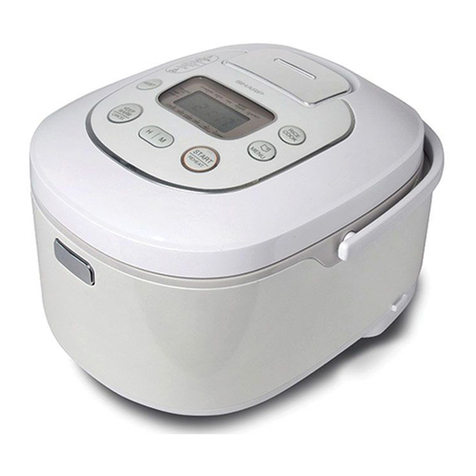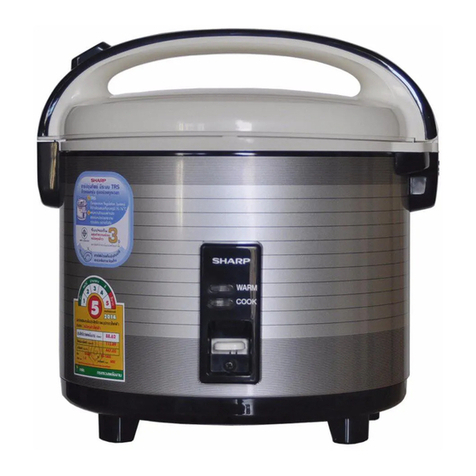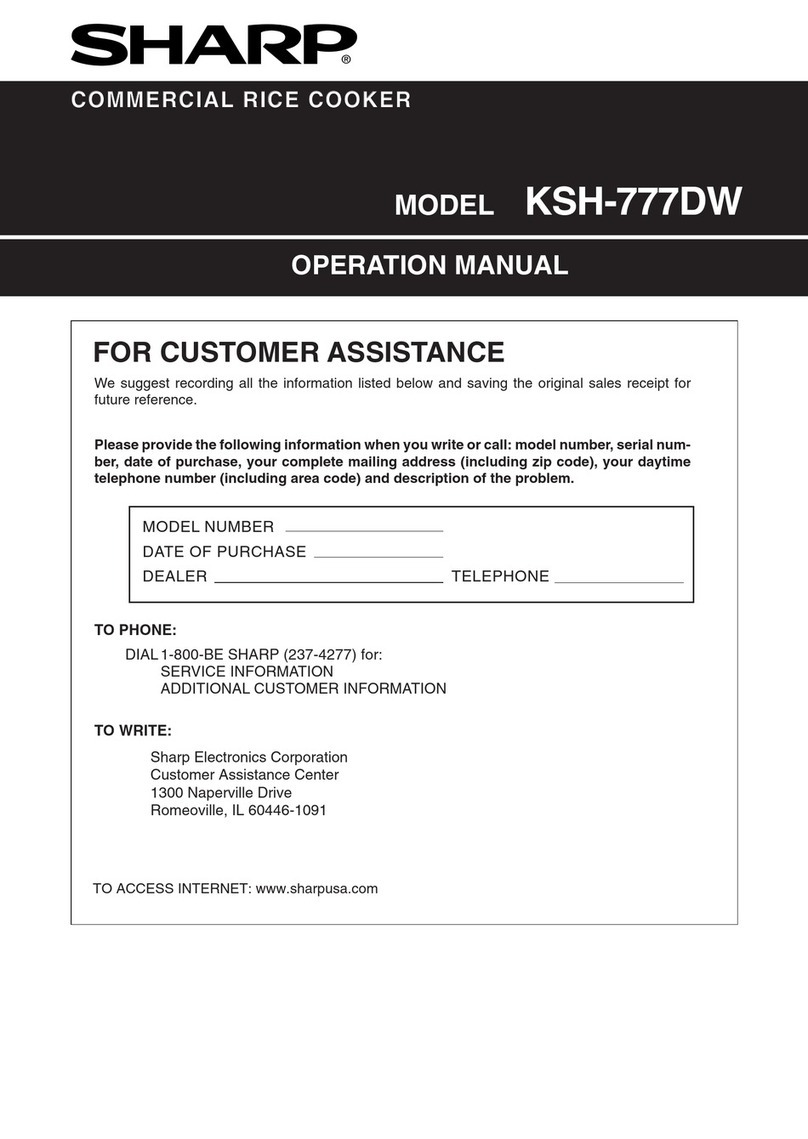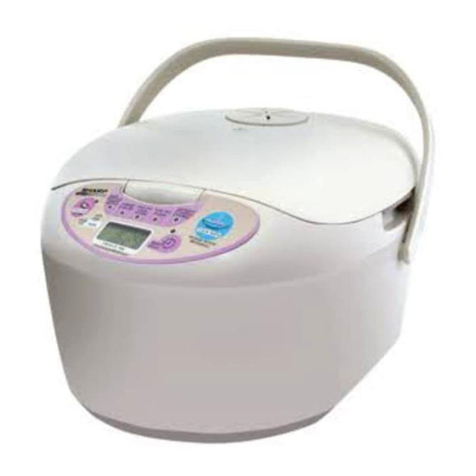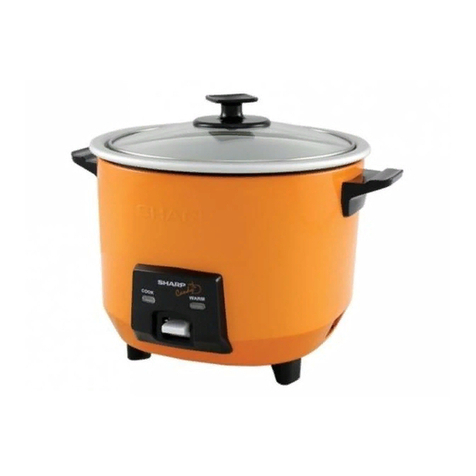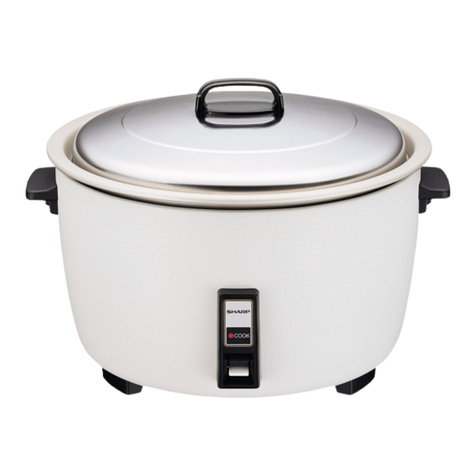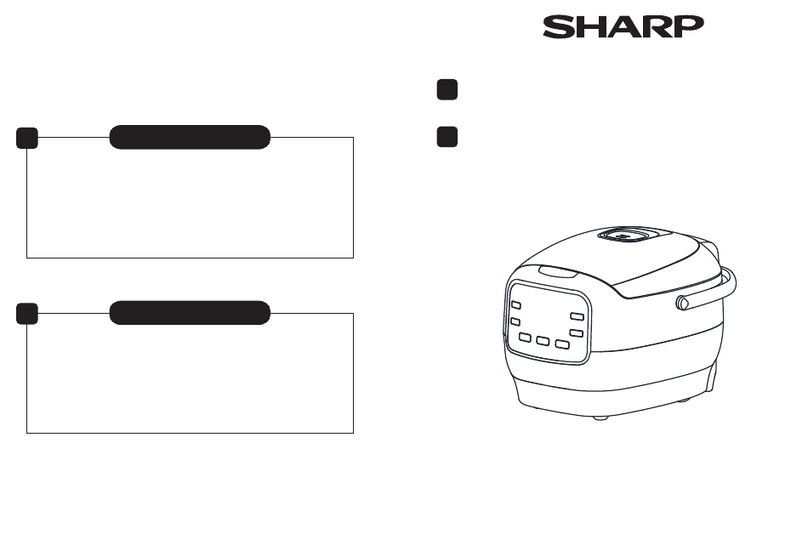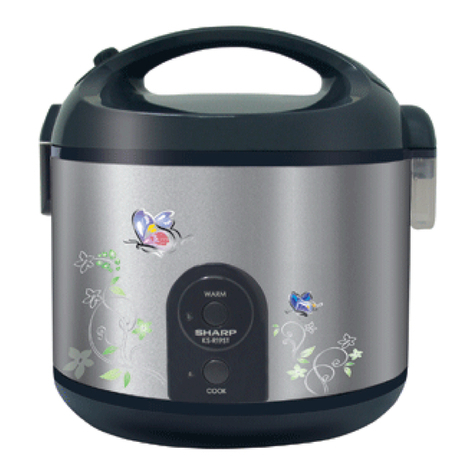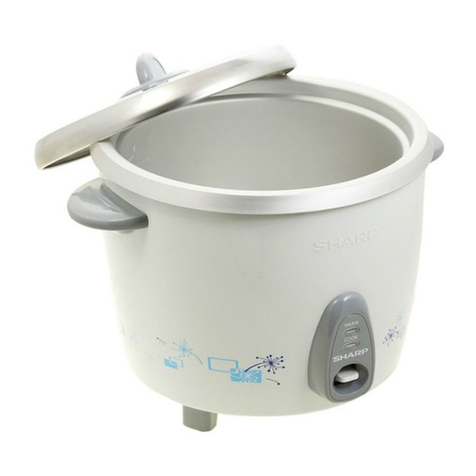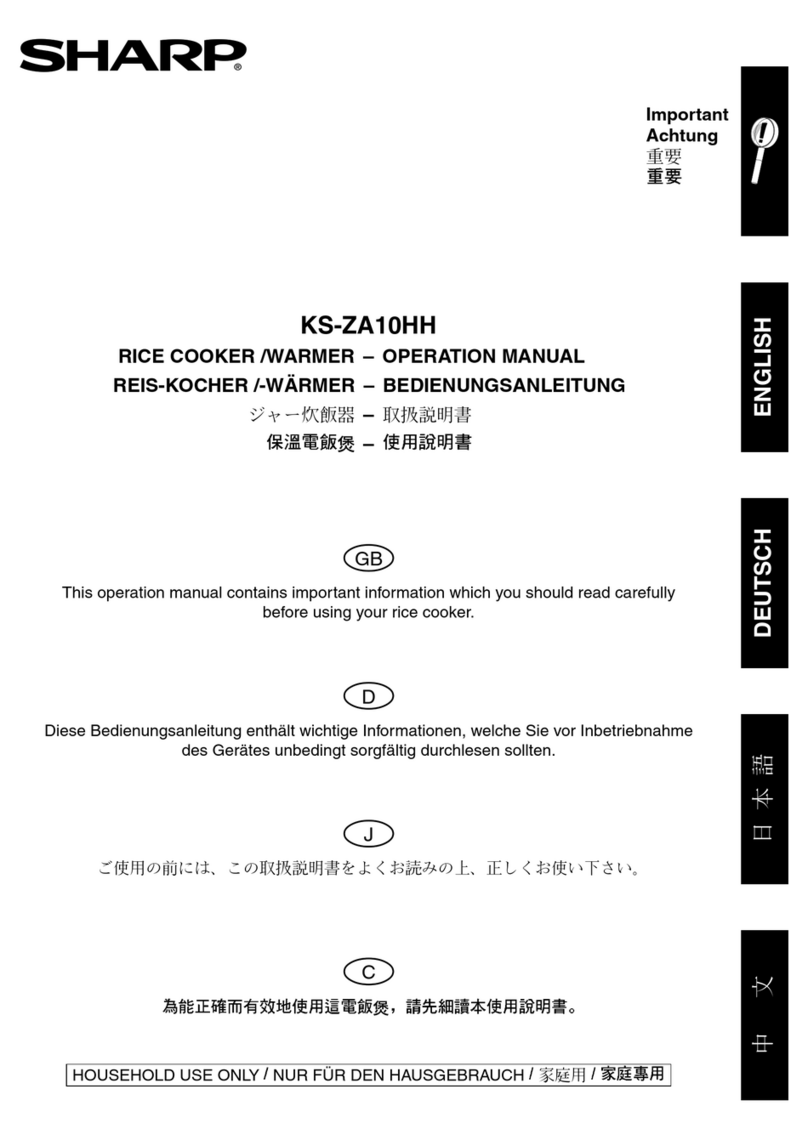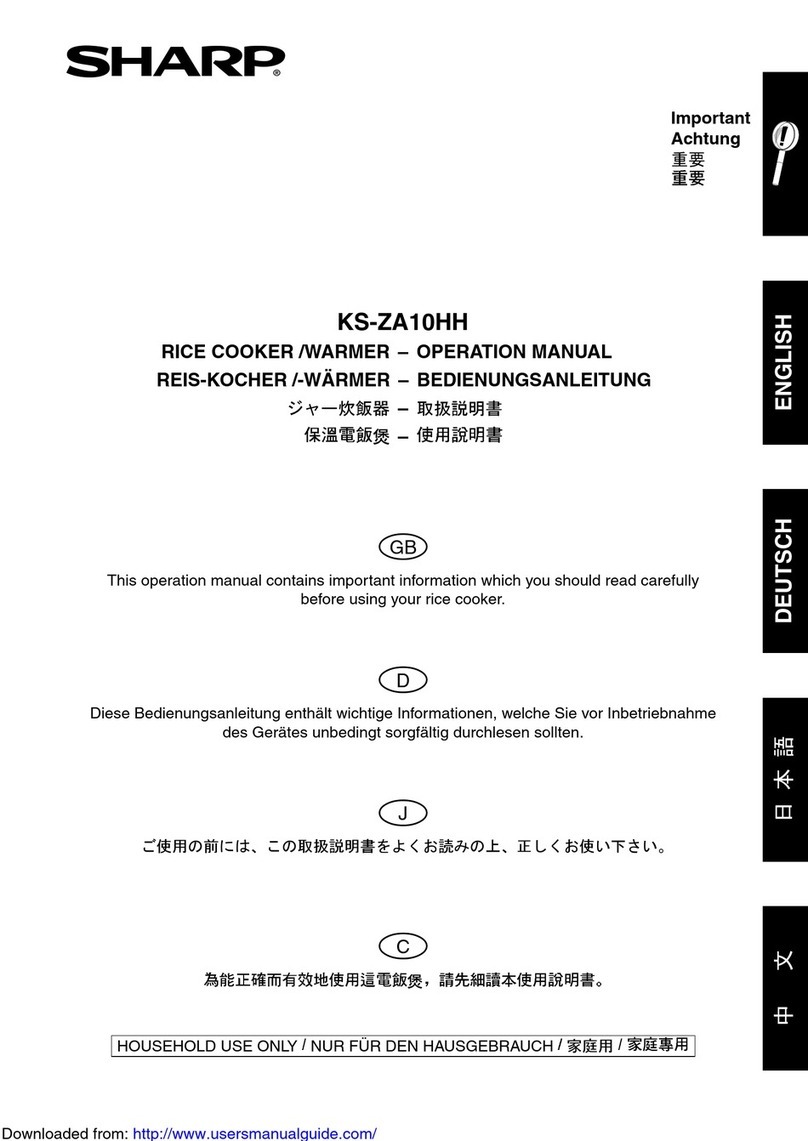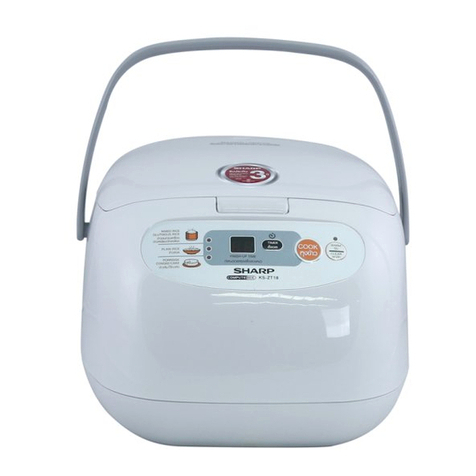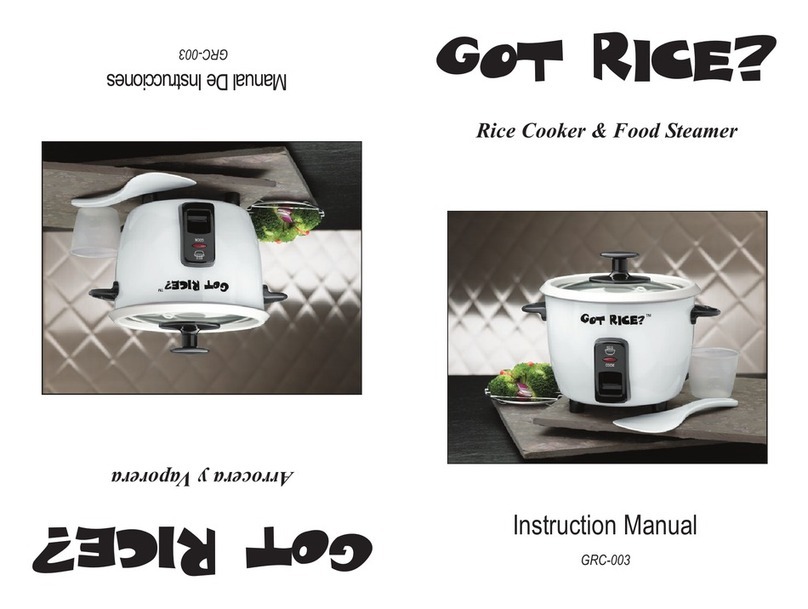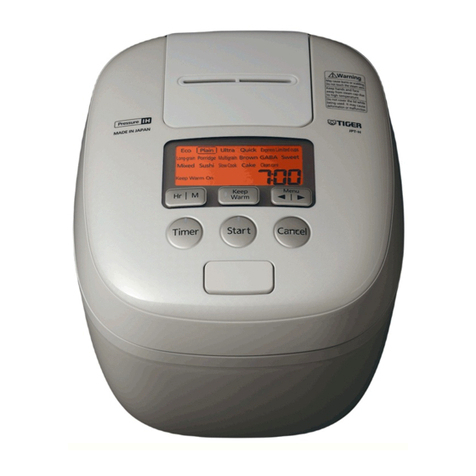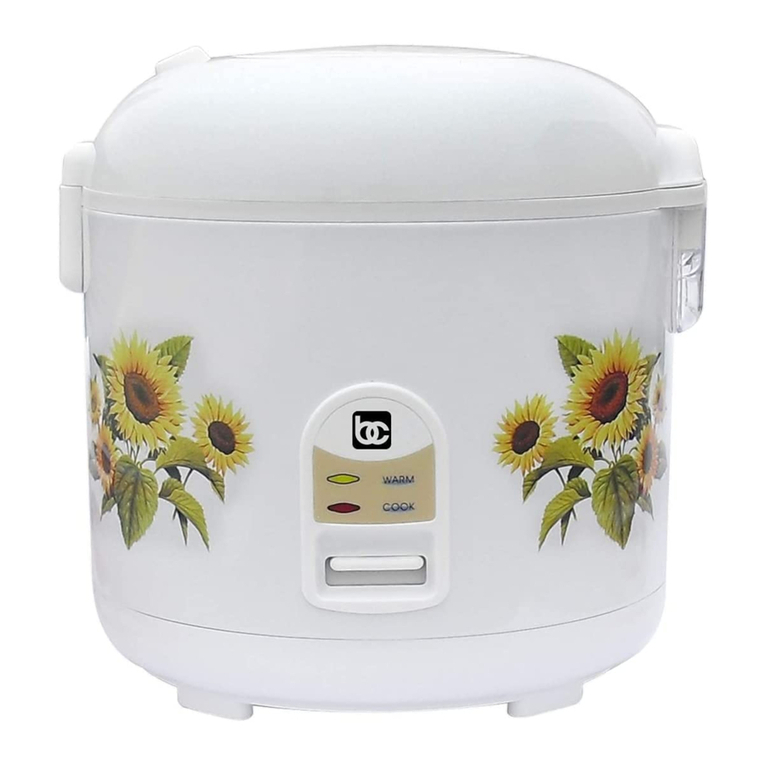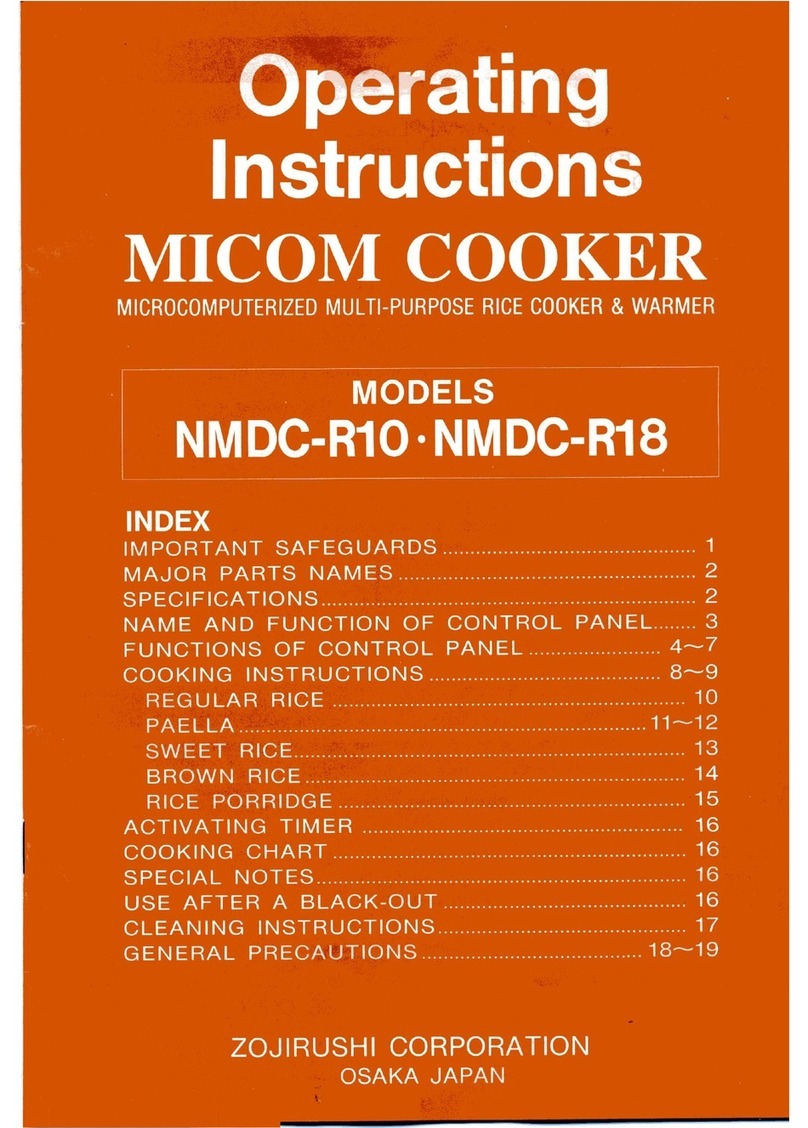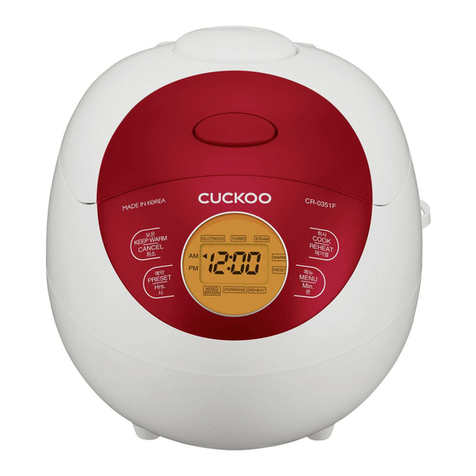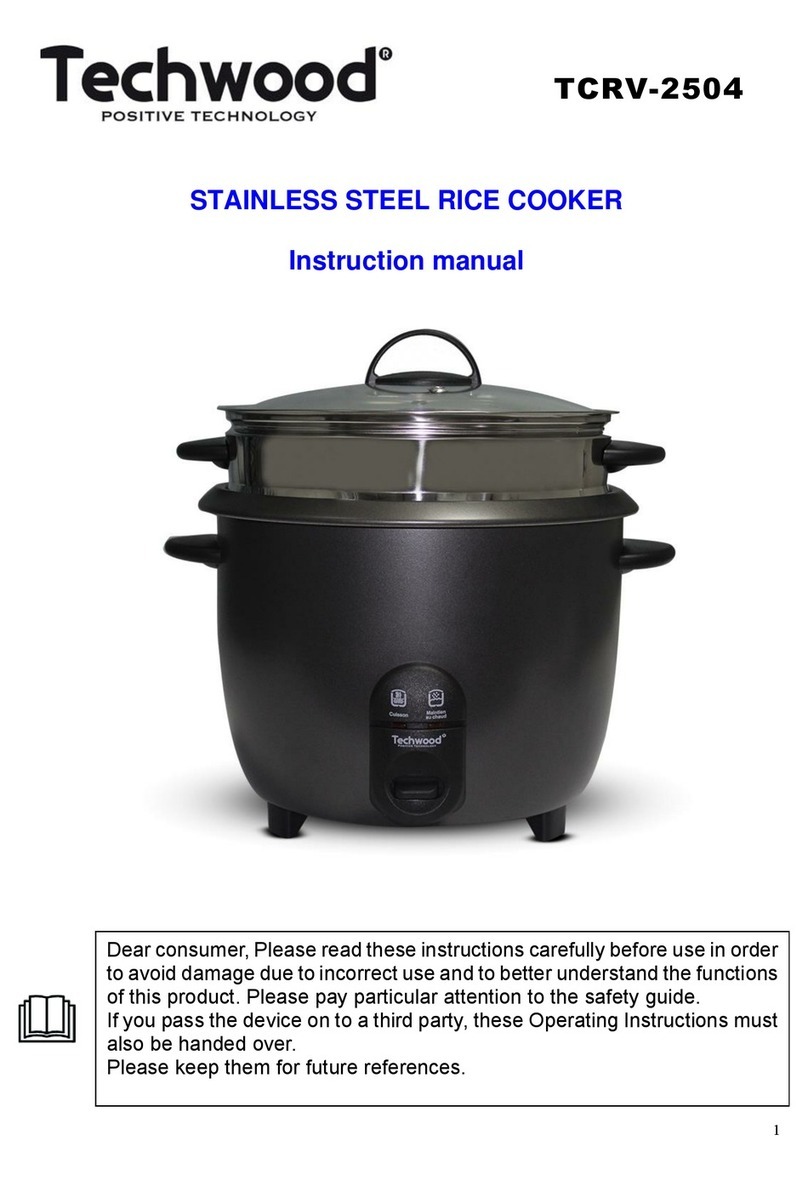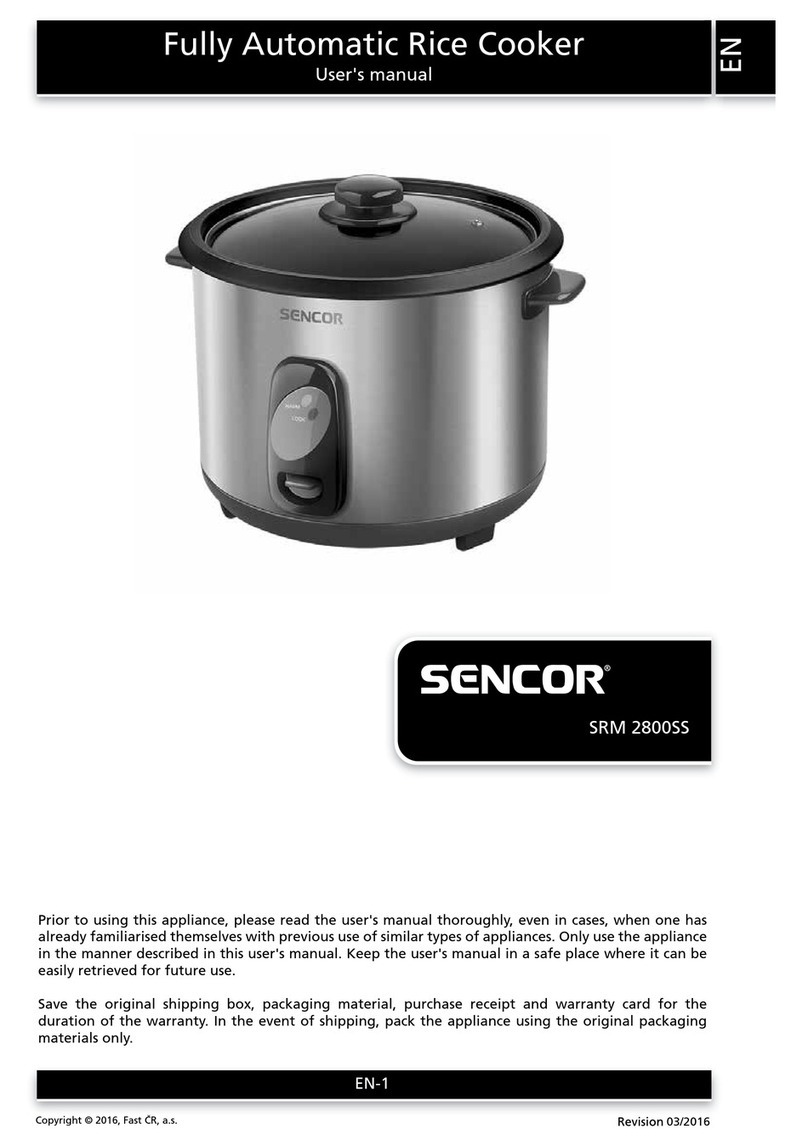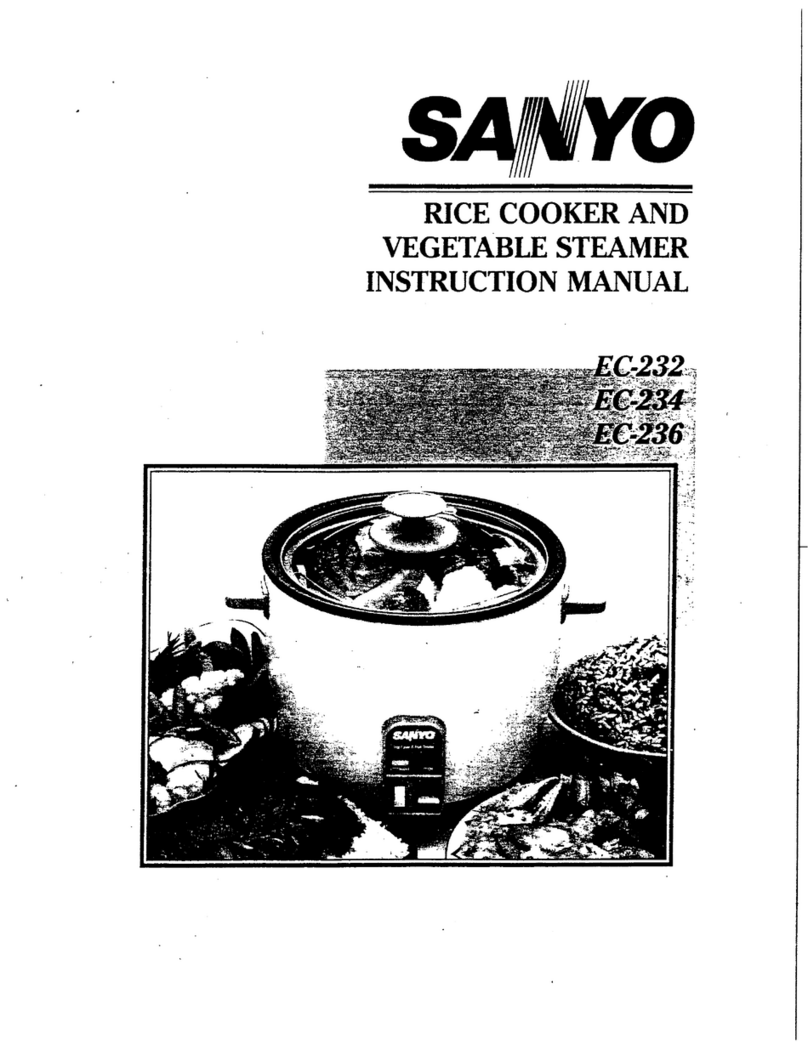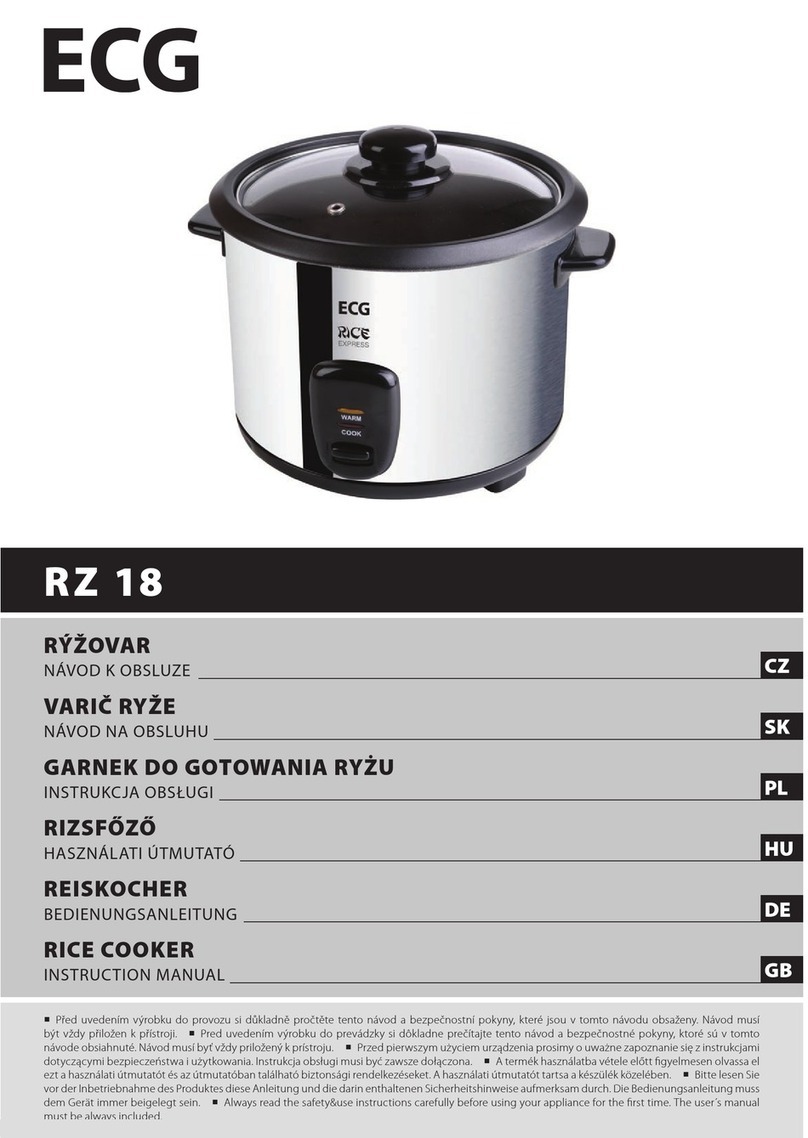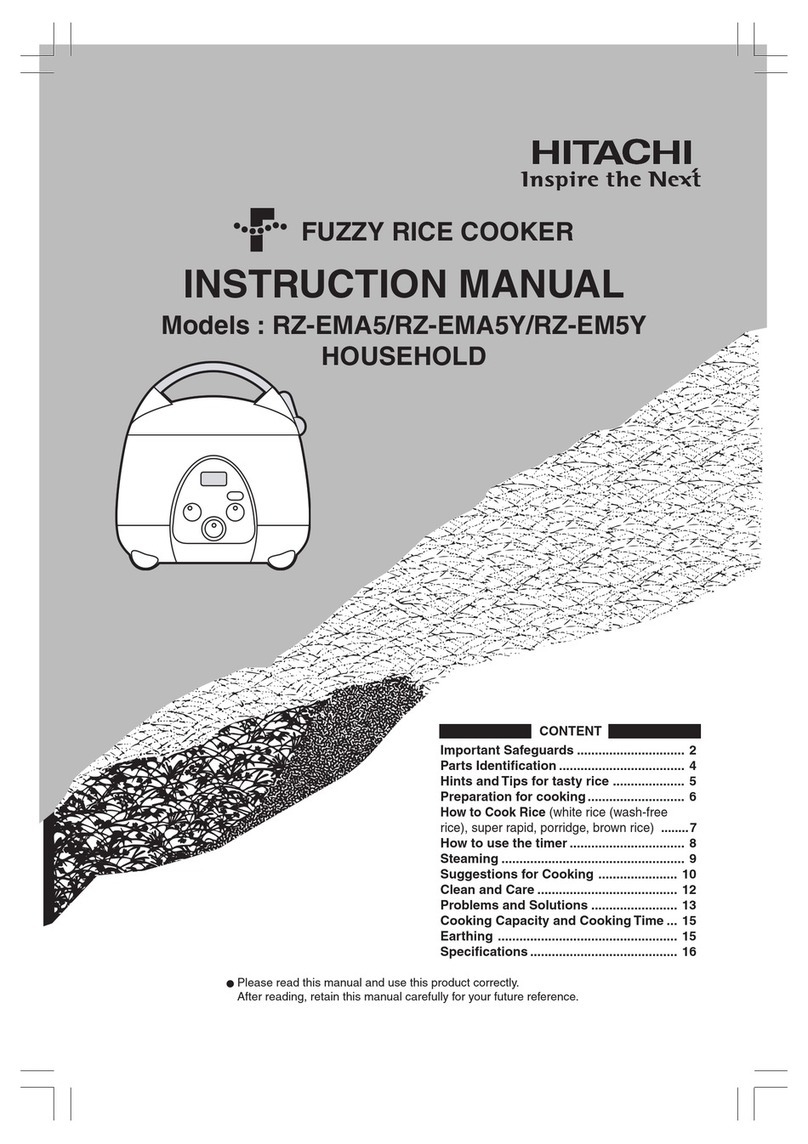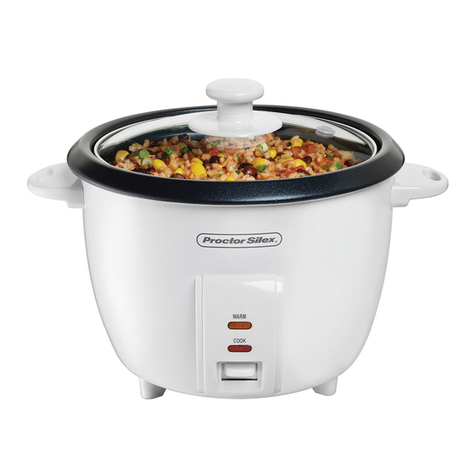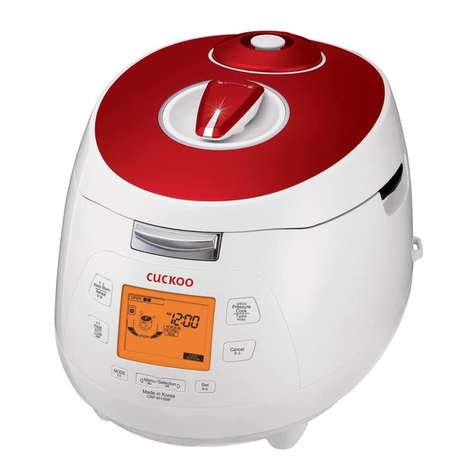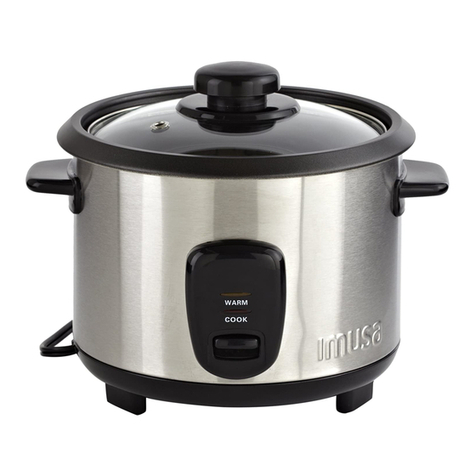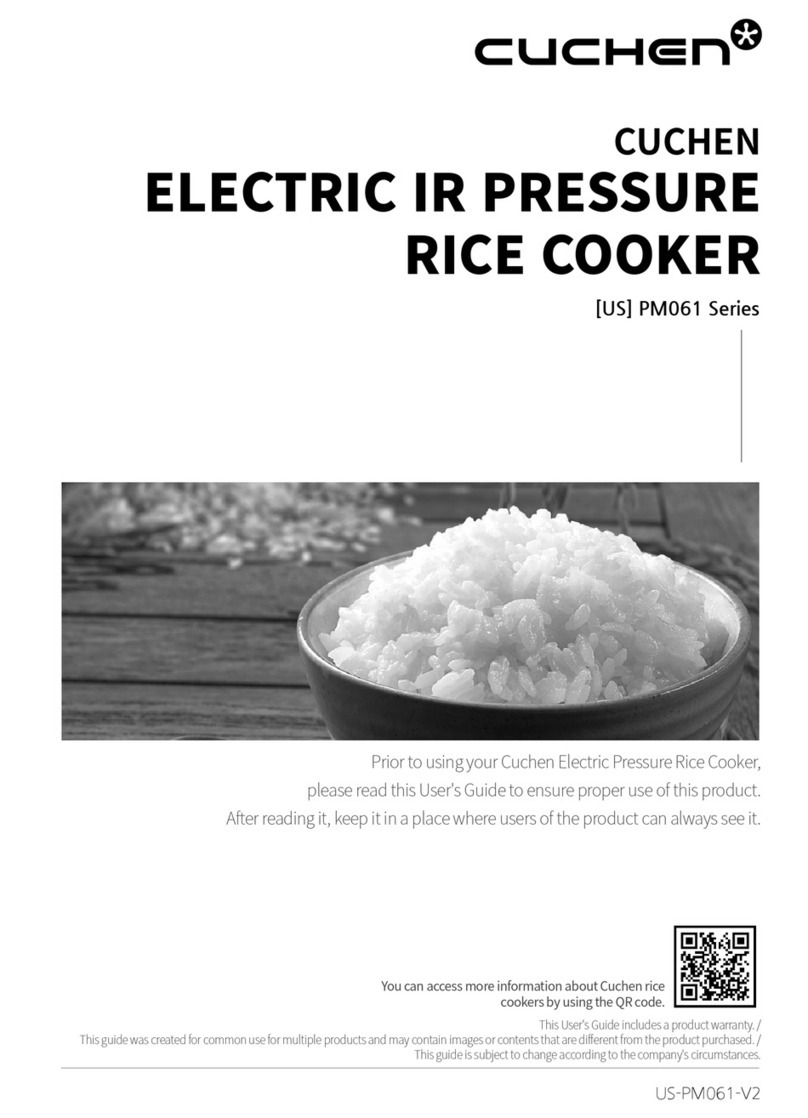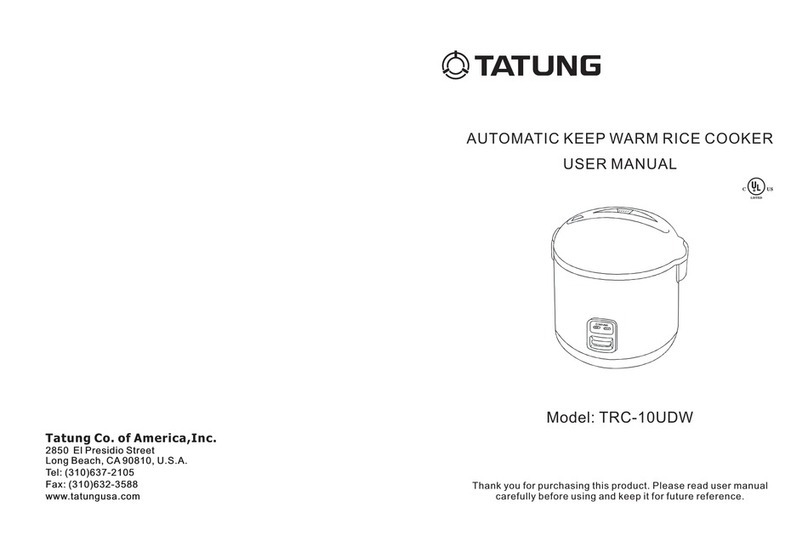6
3. How to use it
(1) Before cooking
Do not use the inner pot for washing rice.
Wash rice quickly and thoroughly.
Insufcient washing will cause scorching and odor.
Use clean, clear water.
Do not use any other inner pot except the provided one.
Insert the plug into wall outlet rmly and when disconnecting, hold the plug and pull it out without
touching the power cord.
Do not use the inner pot with other heating appliances such as a gas table. The pot may be
transformed and it may cause poor cooking result.
Do not use the damaged inner pot. It may cause in malfunction.
The water level marking is a standard guide and may be adjusted slightly depending on the kind of
rice or your liking. Remember that adding too much water may cause boiling over.
Carefully align marks when replacing the lid cap on the lid.
Foreign matter adhered to the outside of the inner pot, heater plate and thermistor plate must be
washed off before use. If not, it may cause inadequate cooking or a damage of the rice cooker.
Rice with ingredients containing seasonings should not be cooked by using delay start setting.
Because the settling or decay of the seasoning is likely to cause inadequate cooking.
Hints for determining the amounts of ingredients and seasonings :
The amounts of rice and seasonings that can be cooked vary depending on the menu.
A standard for the amount of ingredients is 30-50 % of the mass of rice to be cooked, but follow
the amounts given in the recipe pages of the operation manual.
After measuring the amounts of rice, seasonings and ingredients adjust the water level and stir
well with a plastic spoon. If the seasonings are settled, it is possible to result inadequate cooking.
Cut the ingredients rather ne, put them on the rice and not mix with rice.
Stirring may result in unsatisfactory cooking.
(2) Cooking rice
During cooking rice clicking sound is heard but this is due to ON-OFF action of the relay and quite
normal.
During the cooking of the rice, a zzing sound may be heard, This is due to the remaining water on
the outside of the inner pot and is not a problem.
Do not opening the lid when during boiling because touched hot steam.
During or immediately after cooking, the areas near the steam vent hole are kept at high temperature.
Do not touch those areas to avoid burns.
Do not place a wiping cloth or the like on the lid or the handle during use.
It may cause the damage to the operation board and the deformation and/or discoloration of the lid.
Stir rice well using the plastic spoon provided within 30 minutes after cooking.
It will allow escape of the excessive steam and uffy appearance of the cooked rice will result.
Immediately after cooking some sticky lm may be formed in the surface of the cooked rice with the
central portion sunken but this means no problem. This is phenomenon called spherical cooking.
In the following cases heavy scorch may occur.
When rice washing is insufcient.
When the rice is soaked in water for a long time.
When rice other than plain rice is cooked with seasoning (especially sake, sugar, ketchup,
tomato-puree and etc.).

